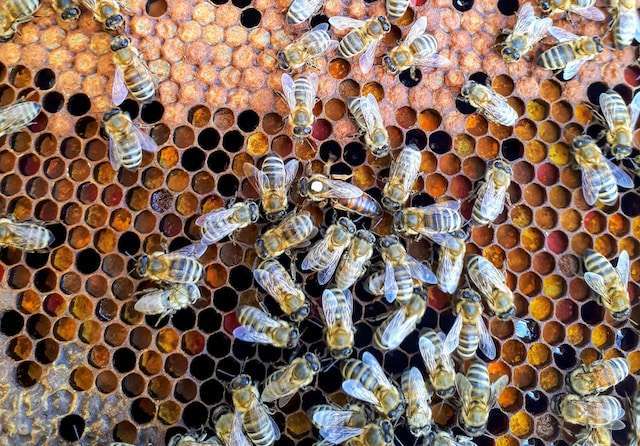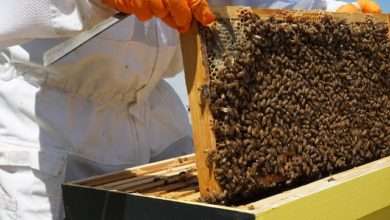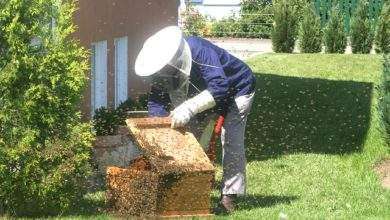Queen Rearing with JZBZ

As modern beekeepers strive to keep their colonies healthy and productive, more and more are venturing to venture beyond the basics of beekeeping into the world of queen rearing.
Queen rearing is a relatively specialized process of breeding better queens for their colonies in order to improve their performance or mite-resistance. It is a complex but rewarding endeavor, and one of the best methods to do it is with the JZBZ system.
What is Queen Rearing?
Queen rearing is a beekeeping process in which beekeepers seek to raise and breed their own queens instead of purchasing queens from other beekeepers or breeders. This is conducted by manipulations within the hive, taking advantage of the natural swarming process of a colony. With queen rearing, beekeepers can create better queens with the traits they want in their colonies, like increased mite-resistance or productivity.
Benefits of Queen Rearing for Beekeepers
- Enhanced Colony Strength: When beekeepers engage in queen rearing, they have the opportunity to produce queens from their strongest and healthiest colonies. By selecting the best genetic stock, beekeepers can improve the overall vigor and resilience of their hives. Strong colonies are better equipped to withstand environmental stressors, such as harsh weather conditions or pest infestations, leading to higher survival rates and overall colony strength.
- Disease Resistance: Raising queens from colonies that have demonstrated resistance to common bee diseases, such as Varroa mites or Nosema, can significantly reduce the incidence of these ailments within the apiary. By selecting queens with an inherent resistance to specific diseases, beekeepers can reduce the need for chemical treatments, promoting healthier bees and more sustainable beekeeping practices.
- Honey Production: Queens play a vital role in honey production within a hive. By selectively breeding queens with a strong work ethic and excellent honey production traits, beekeepers can ensure high yields of honey. Productive queens encourage worker bees to forage diligently, resulting in increased nectar collection and subsequent honey production. Additionally, well-mated queens are more likely to pass on their desirable traits to the worker bees, further enhancing overall productivity.
- Colony Expansion: Queen rearing allows beekeepers to control the rate at which colonies expand. By raising additional queens, beekeepers can split or divide existing colonies, thus creating new hives. This method of colony expansion is particularly useful for sustainable beekeeping practices, as it reduces the need to purchase new colonies or swarm management. Moreover, creating new colonies through queen rearing allows for genetic diversity within the apiary, increasing the chances of adaptation and resilience to changing environmental conditions.
- Genetic Improvement: Through queen rearing, beekeepers have the opportunity to continually improve the genetic pool of their colonies. By selecting queens based on desirable traits, such as increased honey production, calm temperament, or disease resistance, beekeepers can gradually breed bees that exhibit these characteristics consistently. Over time, this process of selective breeding leads to the development of more resilient and high-performing colonies, ensuring the long-term success of the beekeeping operation.

What is the JZBZ System?
The JZBZ system is an effective and reliable queen rearing method developed in South Africa in the 1970s by Jack Zambini and John Belosic. Since its original development, the system has been refined by a number of beekeepers around the world.
The system works by creating a number of artificial swarms, or splits. A beekeeper removes a part of the brood from their colony, with several frames of capped brood, two frames of food, and a single frame of young developing larvae (10-12 days old). This is then placed into a nuc (nucleus) box, and the queen is placed into the new nuc.
The nuc then successfully splits the colony in two, and the nuc becomes a new colony. The single frame of larvae is then induced to produce a queen, since it contains the ovarian gland tissue and glands that are necessary to produce and develop a young queen. The new queen is then allowed to mate and take over the new colony, and the beekeeper can then quickly move onto the next split, repeating the process until all desired splits are made.
Benefits of Queen Rearing with the JZBZ Method
Queen rearing with the JZBZ system offers several advantages as opposed to other methods. The system is relatively easy to set up and use, and requires minimal investment in terms of supplies and equipment. The splits can be made quickly and easily, allowing the beekeeper to produce more queens in a shorter amount of time.
The JZBZ system also offers improved queen quality. The system works to produce well-mated, healthy queens with a variety of desirable traits, such as increased mite-resistance or improved productivity.
Master beekeeper Dan Long, with years of experience in beekeeping, has developed a line of products known as EZPZ, which makes the JZBZ queen rearing process more efficient.
Here in this video, learn more about Master beekeeper Dan Long and his EZPZ products:
Conclusion
Queen rearing with the JZBZ system is an effective and reliable method of breeding better queens for beekeeping colonies. By taking advantage of the natural swarming process, beekeepers can quickly and easily create a number of splits in order to produce better queens with the desired traits. The JZBZ system is an excellent way to further improve the health and mite-resistance of a colony, allowing beekeepers to take their beekeeping to the next level.
Frequently Asked Questions – Queen Rearing with JZBZ
What is Queen Rearing with JZBZ?
- Queen Rearing with JZBZ is a specialized method of selectively breeding honeybee queens using the Jenter-Zoller plastic queen cell cups and associated accessories.
How does Queen Rearing with JZBZ work?
- The JZBZ system provides beekeepers with a simple and efficient way to rear queens. It involves grafting young larvae into JZBZ queen cell cups, which are then placed in a queenless hive. The bees in the hive will raise these larvae to become new queens.
Why is queen rearing important for beekeepers?
- Queen rearing is crucial for beekeepers as it allows them to maintain healthy and productive colonies. By selectively breeding queens, they can improve desirable traits such as honey production, disease resistance, and temperament.
What are the benefits of using JZBZ for queen rearing?
- The JZBZ system offers several advantages for beekeepers. It provides a consistent environment for larval grafting, ensuring high success rates. The JZBZ queen cell cups are durable, reusable, and easily identifiable, simplifying the process of locating and transferring queen cells.
Can anyone use Queen Rearing with JZBZ?
- Yes, Queen Rearing with JZBZ is suitable for beekeepers at all levels, from beginners to experienced enthusiasts. It is designed to enhance the success and efficiency of queen rearing, regardless of your level of expertise.

How long does it take for a queen to develop using JZBZ?
- Under normal circumstances, it takes approximately 16 days for a queen to develop from an egg to an emerged adult using the JZBZ method. However, environmental factors and hive conditions may slightly influence the timeline.
Can I use JZBZ with any honeybee species?
- Yes, the JZBZ system is suitable for queen rearing with various honeybee species, including European honeybees (Apis mellifera) and their locally adapted subspecies. However, it’s important to ensure you have a good understanding of the specific requirements of the bee species you are working with.
Is Queen Rearing with JZBZ compatible with organic beekeeping practices?
- Yes, Queen Rearing with JZBZ is compatible with organic beekeeping practices. The system does not involve the use of synthetic chemicals or treatments that would compromise the organic status of a beehive.
Are there any specific instructions or guidelines for using JZBZ?
- Yes, it is recommended to follow the provided instructions that come with the JZBZ system, ensuring proper hygiene and careful attention to details during the queen rearing process. Additionally, resources such as instructional videos or books on queen rearing techniques can be valuable references to improve your success.




